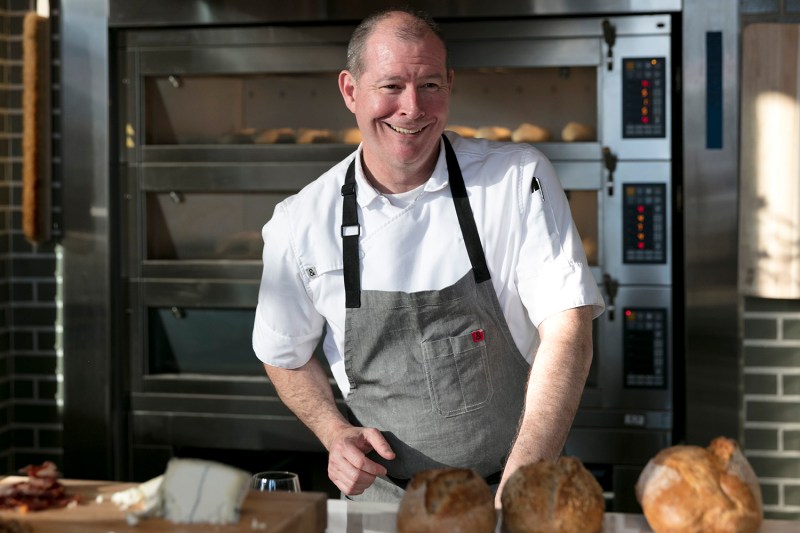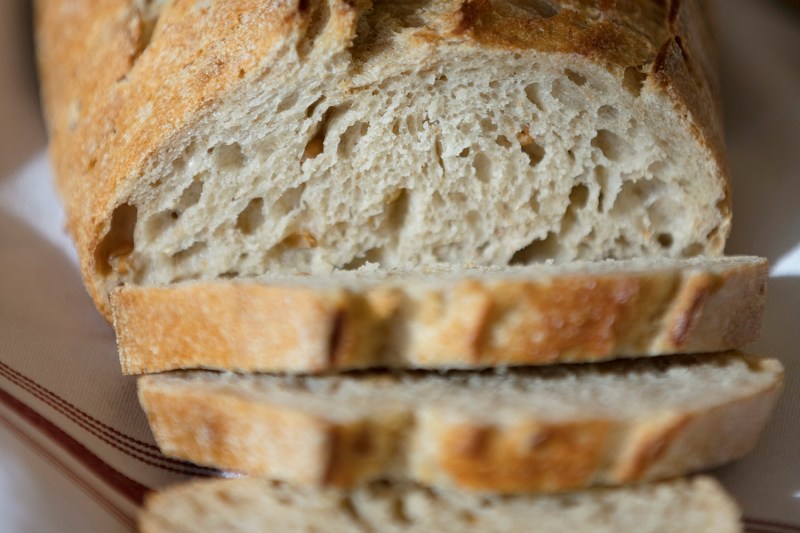Baking bread is a daunting task if you’ve never done it before. But the only way to learn to make fluffy, crusty loaves is to practice and experience a little trial and error. This is especially the case with sourdough, which requires a starter, aka a fermented dough that contains wild yeast and bacteria. This is what’s used in place of active dry yeast to make sourdough bread rise, and it also gives the loaf its signature tangy flavor.
While you can follow a recipe for baking a sourdough loaf, it’s likely that your very first attempt isn’t going to be very successful. It takes time, patience, and practice, but some tips from the pros also don’t hurt. So we chatted with Jonathan Davis, the senior vice president of La Brea Bakery, to get some pointers on creating a starter, what type of flour to use, and how long to proof a sourdough loaf. Use these tips in conjunction with a solid sourdough bread recipe, and you’ll become a seasoned baker in no time.

The Manual: How should a novice baker go about sourcing or creating a starter?
Jonathan Davis: While some recipes are more complicated than others, the process of creating your own sourdough starter from scratch is somewhat simple. It’s always a good idea to use reference books, but if you’re a novice baker and uncomfortable with creating one from scratch, starters can always be purchased on the internet. If you’re looking to create a basic sourdough starter, most recipes will call for water, flour, and time. After combining the water and flour, bakers must wait several days (if not longer) to fully cultivate and feed their starter. At La Brea Bakery, we’ve always used Nancy Silverton’s original sourdough starter — made from water, flour, and organic grapes — that she cultivated more than 30 years ago.
TM: What type of flour would you suggest using to bake a sourdough loaf?
JD: High protein bread flour is usually recommended when baking a sourdough loaf. But today, because we have access to so many different grains, using a high protein bread flour isn’t required. With so many different available grains on the market, bakers can create different sourdough blends based on their own characteristics and personal preferences, which is something we’ve started experimenting with at La Brea Bakery during the last several years.

TM: Should you knead the dough during the first fermentation? How long should the dough be left to rise?
JD: Kneading during fermentation is totally dependent on the formulation being used. Some knead throughout the process to initiate the dough, but it’s a personal preference. When it comes to determining how long the dough should be left to rise, it’s important to examine the quantity. The bigger the quantity, the longer it will take to rise, ranging anywhere from six to 24 hours. The key to fermentation is to always examine the volume first. One trick to telling whether the dough is ready to be shaped is to poke it with your finger. If the indentation stays, the bread is ready to be shaped.
TM: After the first fermentation and shaping the dough, should it be proofed? For how long?
JD: The duration of proofing depends on the fermentation process with a wide range of options — six to 24 hours — depending on the desired outcome. La Brea Bakery is known for our sourdough loaf, but over the years, we’ve amassed several variations including our Sourdough Batard, Petite Country White Sourdough Round, Country White Sourdough Loaf, and La Brea Bakery Reserve Demi Sourdough Baguette. All of the breads that we make at our bakery take a total of six hours of proofing.



